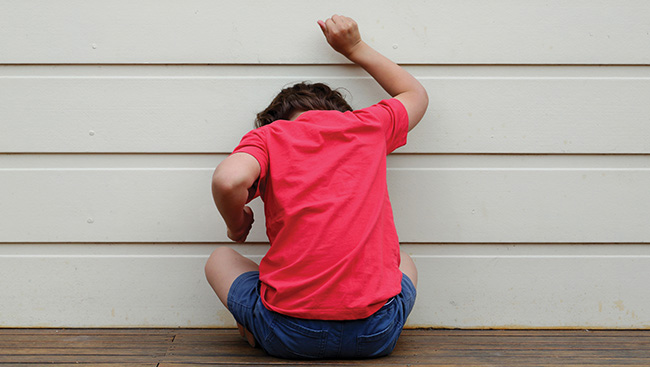1 in 68 children has been diagnosed with autism, with the condition being more prevalent in boys.
Autism or Autism Spectrum Disorder (ASD) is a range of conditions that have at their core common characteristics such as delay in social skills, difficulties with communication, and repetitive or stereotypical behaviours.
How common is autism?
According to recent data from the US Center of Disease Control and Prevention, one in 68 children has been diagnosed with autism, with the condition being more prevalent in boys. Hearing about the rising number of autism cases in children must be alarming for young parents whose first child is diagnosed with autism, or even for parents who don’t really know what autism is.
Early signs of autism
The symptoms of autism are quite challenging for parents to detect at an early stage. Parents should look out for the following signs: the child does not look at the parents (maintain eye contact) for more than a second or two, does not smile in response to their smile or most importantly, is not developing any way of communication. Some of these signs can be seen as early as 18 months of age.
For some children, parents notice typical development in the early years, followed by a loss of previously developed skills. For example, these children may not be using the words which they may have been previously using to name or request objects, people or their needs. Parents or teachers may also notice that these children do not like playing with other children, or that their play lacks imagination. For children who developed more typically but later lost their skills, the signs of autism are usually seen by the age of three.
What can parents do to help their child?
Early diagnosis and intervention on children can make a big difference by improving their skills, helping them to be more independent, and have a better quality of life. The first step would be to see your family doctor. A family doctor will then refer to arrange for necessary assessments and work together with a multidisciplinary team of specialists consisting of a pediatrician, psychologist, speech and language pathologist, and an occupational therapist, to determine if your child has autism.
If a child has been diagnosed with autism, it is common for parents to blame themselves or each other for their child’s condition. As there is no definitive cause for autism, it has nothing to do with what you or your spouse did or did not do for your child. ASD cannot be cured with any medication. However, some studies have shown that medications may be useful in helping some children with their anxiety, hyperactivity and aggressive or self-injurious behaviours. You should consult your family doctor or pediatrician to see if medication is recommended or if other forms of behaviour interventions would be more suitable for your child.
There are many evidence-based strategies that can help these children develop their skills. Working with qualified professionals who are willing to jointly collaborate to develop an intervention plan for the child can make an immense positive impact. Parents can find a list of qualified professionals by searching the Registry of Autism Service Providers (RASP). Speaking to other parents who have children with the same diagnosis and joining local parent support groups can also be a great support system for the families.

Intervention services for children with autism
In British Columbia, the Ministry of Children and Family Development provides funding to support intervention services for children with autism. The funding is divided into two categories, based on whether a child is under six years of age or over. The families can choose the practitioner they would like to work with from the RASP and have them bill the Autism Funding unit directly.
The schools in BC have Learning Support Coordinators or Integration Support Teachers who look into getting the child the necessary support to help the child succeed within the school environment. The schools also set up Individual Education Plans (IEP) for these children to ensure that any necessary modifications or adaptations to the curriculum or teaching materials can be done to help the child learn.
Various school districts and school boards have their own support systems in place. For example, the Surrey School District has a collaboration program with a child’s home team to ensure that there is coordination between the school and home programs. Schools also have Applied Behaviour Analysis (ABA) support workers and educational assistants to provide help as necessary while the child is at school.
Interventions that can help a child with autism
Scientists agree that the earlier a child receives intervention services, the better and faster they benefit from the intervention. Intervention plans for children with autism generally consist of services provided by behaviour consultants, occupational therapists, and speech and language pathologists.
Behaviour consultants may use many approaches to address behavioural challenges and teach required skills to children. The most widely used approach is ABA and it is considered by many experts to be the most effective evidence-based therapeutic approach developed to date for children with autism. In recent years, another approach has come to light which uses the principles of ABA but in a more developmental, play-based approach. This method is called the Early Start Denver Model and is gaining popularity among practitioners and parents alike.
Occupational therapy is often used as a treatment for the sensory challenges associated with autism. It is also used to help teach activities of daily living skills such as dressing and feeding, and fine-motor skills. Speech-language pathologists help improve a child’s communication skills and help them with strategies to express their needs in a socially-appropriate manner.
The most important thing to do if your child has autism is to ensure you have a team who works collaboratively on your child’s plan. A team approach has been known to gain better results in helping children with autism to reach their fullest potential.

ABOUT THE AUTHOR
Shalini Das is an Occupational Therapist and Behaviour Consultant, and owner of Symbiosis Pediatric Therapy Inc. which provides a full range of therapy services to children with special needs. She has over 20 years of experience in the healthcare industry, and is the author of many books and research papers in this field. Das recently received the Surrey Women in Business Award (Professional) 2018 and is a contender for the RBC Top 25 Canadian Immigrant Awards 2018.



